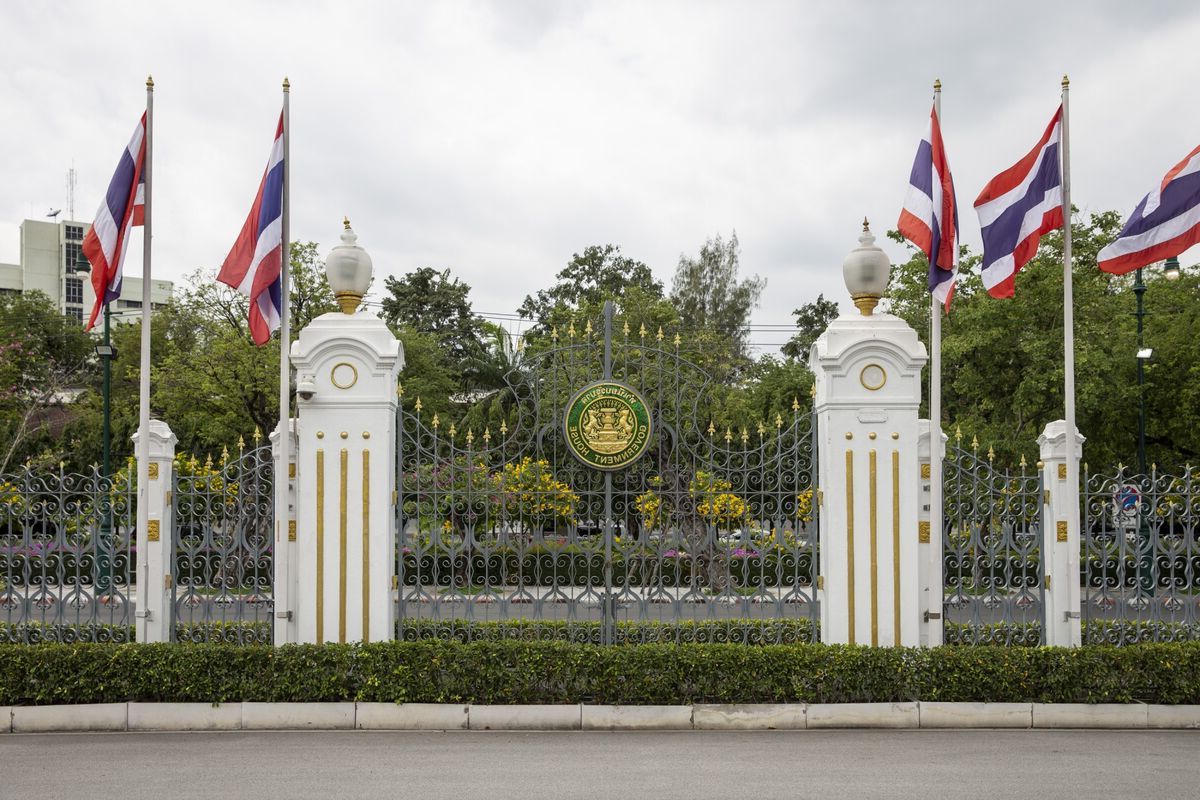Bank of Thailand’s Strategic Move: In response to the evolving market conditions and the gradual recovery from the impact of the Covid-19 pandemic, the Bank of Thailand (BOT) has strategically decided to return bond auction sizes to pre-Covid norms.
This move reflects the BOT’s commitment to market normalization and its proactive approach to debt management. By collaborating with the Public Debt Management Office (PDMO) and adapting auction parameters, the BOT aims to ensure market stability and foster resilience in the face of uncertainty.
Furthermore, the advancement of the Thai Overnight Repurchase Rate (THOR) as a reference rate demonstrates the BOT’s dedication to enhancing the efficiency and transparency of the market.
This strategic move by the BOT not only signals a return to pre-pandemic norms but also sets the stage for an intriguing discussion on the potential implications for the financial landscape in Thailand.
Key Takeaways
- Adjustment of auction sizes for 3-month and 1-year bills in 2024 to align with changing financial conditions
- Enhanced coordination between BOT and PDMO for bond issuance to ensure market efficiency and resilience
- Regular issuances of floating-rate bonds linked to THOR to strengthen THOR’s credibility and promote market transparency
- Proactive approach to adapting to market conditions and maintaining stability and liquidity in the bond market
BOT’s Strategic Response to Market Normalization
The Bank of Thailand (BOT) has strategically responded to the normalization of the market by announcing a significant adjustment to the minimum auction sizes for 3-month and 1-year bills in 2024. This move reflects the BOT’s proactive approach to address the changing dynamics observed in the short-term bond market.
Also Read: Thailand Central Bank Keeps Steady Course Amid Global Concerns
By adjusting the auction sizes, the BOT aims to align the supply of bonds with the demand from investors, ensuring a smooth functioning and efficient market. This strategic response indicates the BOT’s commitment to maintaining stability and promoting liquidity in the bond market.
The adjustment is part of the broader bond issuance program for the year, demonstrating the BOT’s careful consideration of market conditions and its ability to adapt to changing circumstances.
Collaborative Efforts with PDMO for Optimal Debt Management
In a collaborative effort with the Public Debt Management Office (PDMO), the Bank of Thailand (BOT) is intensifying its efforts to closely monitor and manage bond issuance for optimal debt management. This strategic coordination aims to ensure an optimal level of public sector bond supply throughout the year, taking into account market liquidity conditions, anticipated demand for public debt securities, and overall bond supply.
By working closely with the PDMO, the BOT can effectively assess market conditions and adjust bond auction sizes accordingly. The collaborative efforts between the BOT and PDMO will help maintain stability in the bond market, enhance debt management practices, and support the government’s financing needs.
This proactive approach demonstrates the BOT’s commitment to prudent debt management and ensuring optimal outcomes for both issuers and investors.
- Enhanced coordination between BOT and PDMO for bond issuance
- Consideration of market liquidity conditions
- Anticipation of demand for public debt securities
- Assessment of overall bond supply
- Alignment with government’s financing needs
Adapting Auction Parameters for Market Stability
Adapting auction parameters is crucial for maintaining market stability in response to evolving short-term bond demand. The Bank of Thailand (BOT) has recognized the need to adjust its auction sizes to align with changing financial conditions. By raising the minimum auction sizes, the BOT aims to ensure market efficiency and resilience.
This strategic move indicates the BOT’s proactive approach to navigating the evolving landscape of bond demand and its commitment to market stability. As conditions normalize, the BOT’s forward-looking stance allows it to respond effectively to changing market dynamics.
With this adaptive approach to auction parameters, the BOT demonstrates its dedication to maintaining a stable and efficient bond market, further promoting investor confidence. This decision reflects the BOT’s commitment to strategic debt management and its role in fostering a robust financial system.
Advancing THOR as a Reference Rate
Recognizing the importance of strengthening financial instruments and benchmarks, the Bank of Thailand (BOT) is actively committed to advancing the Thai Overnight Repurchase Rate (THOR) as a reference rate. This strategic move aims to enhance the development and utility of THOR in the financial landscape.
Here are five key points to understand the BOT’s efforts in advancing THOR:
- Regular issuances of floating-rate bonds (FRB) linked to THOR: The BOT is actively issuing FRBs that are tied to THOR, which helps promote the use of THOR as a reference rate.
- Enhancing the benchmark’s credibility: By actively promoting THOR, the BOT aims to enhance its credibility and reliability as a benchmark for various financial transactions.
- Improving market transparency: The increased use of THOR as a reference rate contributes to improved market transparency, allowing market participants to make more informed decisions.
- Ensuring market efficiency: By advancing THOR, the BOT aims to enhance market efficiency and promote a level playing field for market participants.
- Strengthening the overall financial ecosystem: The BOT’s commitment to advancing THOR is part of its broader efforts to strengthen the financial ecosystem in Thailand, promoting stability and growth.
Through these initiatives, the BOT is actively working to establish THOR as a trusted and widely used reference rate in the Thai financial market.
Fostering Resilience Through Proactive Market Adaptation
By proactively adapting to market conditions, the Bank of Thailand fosters resilience in the bond market, ensuring a stable and efficient financial environment. This strategic approach allows the bank to stay attuned to evolving demand and adjust auction sizes accordingly. Collaborative efforts with the Public Debt Management Office (PDMO) further strengthen the commitment to effective debt management and strategic alignment with broader economic trends. Through this proactive market adaptation, the Bank of Thailand demonstrates its dedication to maintaining a resilient and responsive bond market.
To illustrate the importance of proactive market adaptation, consider the following table:
| Market Conditions | Bank of Thailand’s Response |
|---|---|
| Increasing demand for bonds | Adjusting auction sizes to meet demand and maintain market stability |
| Volatile economic conditions | Collaborating with the PDMO to ensure effective debt management and alignment with economic trends |
| Evolving investor preferences | Adapting auction strategies to cater to investor needs and maintain market efficiency |
This proactive approach not only fosters resilience but also enhances market confidence, attracting more participants and contributing to the overall stability of the bond market.
Conclusion Of Bank of Thailand’s Strategic Move
The Bank of Thailand has implemented strategic measures to restore market stability and normalize bond auction sizes to pre-Covid levels. This includes collaborating with the Public Debt Management Office for optimal debt management and adapting auction parameters.
Additionally, the advancement of the THOR as a reference rate and proactive market adaptation efforts have been instrumental in fostering resilience in the market.
These actions demonstrate the BOT’s commitment to effective debt management and ensuring a stable financial environment.




